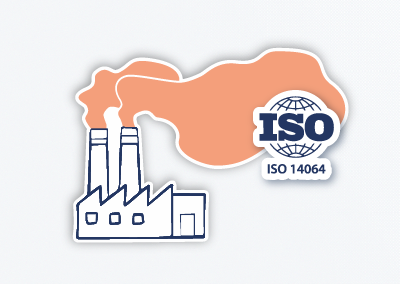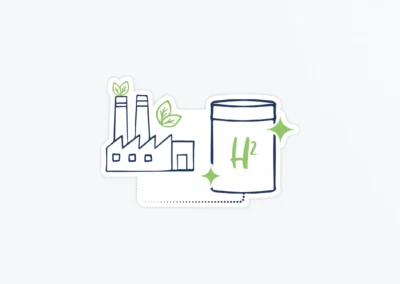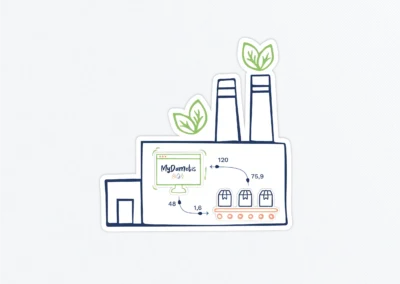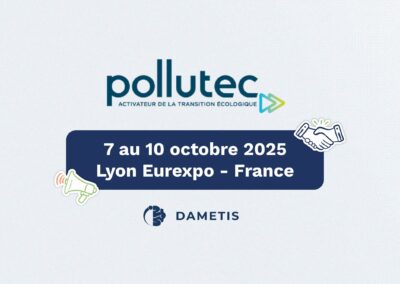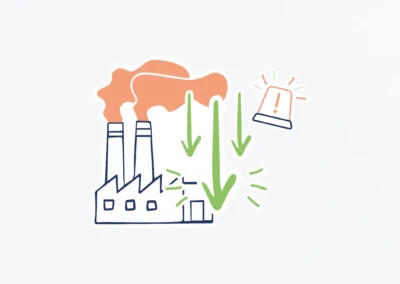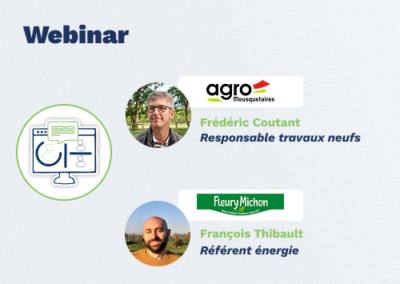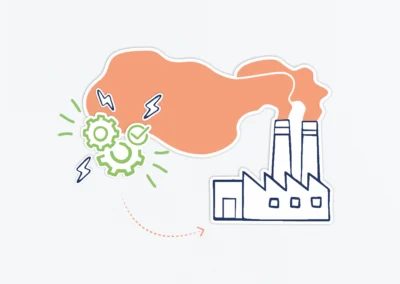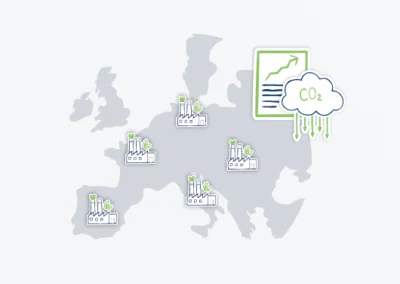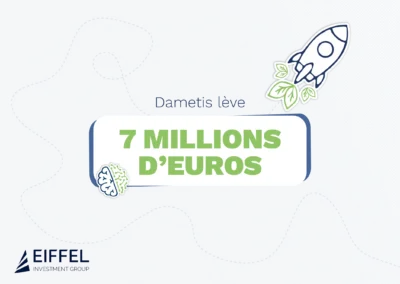
BEGES: Everything you need to know about greenhouse gas emissions reporting
Stimulating and protecting the European net zero emissions industry
The greenhouse gas emissions report (BEGES), also known as the carbon footprint report is a tool for quantifying the greenhouse gas emissions of companies, local authorities, and institutions. It helps them understand their carbon footprint and serves as a starting point for developing reduction strategies.
BEGES records and assesses the amount of greenhouse gases emitted by an organization through its activities. It accounts for both direct and indirect emissions of gases responsible for climate change, such as carbon dioxide (CO ₂), methane (CH₄), nitrous oxide (N₂O), and fluorinated gases (HFCs, PFC SF₆).
The carbon footprint report covers emissions within three scopes:
- Direct emissions (scope 1). These are emissions directly generated by the company’s activities. For example, they include fuel consumption for vehicles, fossil energy for boilers and generators, and greenhouse gas emissions from industrial processes.
- Indirect emissions (scope 2). These emissions are linked to the company’s purchased energy use (electricity, heating/cooling). They occur outside the company’s direct control.
- Other indirect emissions (scope 3). This scope includes all other indirect emissions related to the company’s value chain, beyond its direct control. This typically involves emissions from the supply chain and product life cycle. Scope 3 emissions were made mandatory in 2023; previously, only scopes 1 and 2 were required for carbon footprint reporting.
Which organizations are required to conduct a BEGES?
The French Environmental Code requires the following organizations to carry out a BEGES:
- Companies with more than 500 employees in mainland France
- Companies with more than 250 employees in overseas territories
- State services
- Local authorities with more than 50,000 inhabitants
- Public institutions and other legal entities under public law with more than 250 staff members (e.g. hospitals)
€50,000
This is the maximum fine for failure to carry out or submit a carbon footprint report.
Repeat offenses may result in a fine of up to €100,000.
A decree published at the end of 2021 also introduced a simplified greenhouse gas emissions report, limited to direct emissions, for companies with more than 50 employees benefiting from the France Relance recovery plan.
There is nothing preventing companies that are not legally required to perform a BEGES from doing so voluntarily to improve their carbon footprint.
The BEGES must be carried out every three years for all public entities and companies benefiting from the recovery plan, and every four years for other obligated businesses.
The CSRD directive (Corporate Sustainability Reporting Directive) effective since January 1, 2024, the CSRD introduces new annual sustainability reporting requirements. Completing a BEGES is part of these obligations. The first report is due in 2026 (based on 2025 data) for companies with more than 250 employees, over €50 million in revenue, and a balance sheet total exceeding €25 million. From 2027 (2026 data), all listed SMEs will also be required to comply. However, they will be able to benefit from a two-year grace period for their first publication.
How to conduct a BEGES?
ADEME (the French Agency for Ecological Transition) has developed a six-step methodology for conducting a BEGES:
- Scoping. This step involves, among other things, defining the project by appointing a project manager, setting the organizational boundaries (entities, facilities, etc.), choosing the operational approach (internal vs. external), and raising awareness among the employees involved.
- Identifying emission sources. ADEME has defined six categories of emission sources.
The six categories of emission sources
Source: ADEME
ADEME (the French Agency for Ecological Transition) has developed a six-step methodology for conducting a BEGES:
- Data collection. This operation relies on the collection of internal company data. Data must also be collected from stakeholders (suppliers, customers, etc.). Several types of data can be used depending on their availability: primary data coming directly from the company, secondary data from published sources representative of the company’s activity, data extrapolated from activities comparable to those of the company, and approximate data (data not specifically adapted to the company’s activity).
- Calculating and analyzing the report. This is a technical step that depends on the quality of the data collected. ADEME provides guides and a database for companies that wish to carry out the process themselves.
Once completed, the carbon report must be presented to the company’s leadership.
- Planning transition actions. The definition of measures aimed at reducing the company’s carbon footprint is usually developed collaboratively with partners, especially suppliers.
- Publication. This final step is mandatory for organizations subject to the requirement. All BEGES reports are published on ADEME’s platform: bilans-ges.ademe.fr.
39
The average number of carbon reports published weekly on the ADEME platform
Source: ADEME
The benefits of completing a BEGES
Beyond regulatory compliance, completing a BEGES offers several benefits, especially:
- Measuring and understanding your carbon footprint. The BEGES allows a company to quantify its greenhouse gas emissions and become aware of the extent of its impact on the climate.
This awareness is a crucial first step in beginning an energy and ecological transition.
- Identifying levers for reducing greenhouse gas emissions. Once emissions are identified and quantified, it becomes easier to pinpoint the major sources and implement concrete actions to reduce them.
This may involve improving energy efficiency, transitioning to renewable energy sources, or optimizing business travel.
- Improving environmental and economic performance. Implementing GHG reduction strategies can also lead to positive economic outcomes by reducing energy consumption,a company can achieve cost savings. Moreover, businesses that adopt sustainable practices are often viewed more favorably by consumers and investors.
- Strengthening brand image and competitiveness. Today, a company’s image is strongly influenced by its environmental commitments.
Organizations that take concrete steps to reduce their GHG emissions can benefit from a stronger reputation, which may translate into increased customer loyalty and greater appeal to top talent.
BEGES is a regulatory obligation for some, but an opportunity for all. It’s also a chance to optimize operations with a dual focus: economic efficiency and improved environmental footprint.
Lowering your carbon impact with an EMS
An EMS (Energy Management Software) helps optimize energy consumption. This tool, connected to sensors, measures energy use at different levels of the facilities and correlates this data with various indicators, including carbon impact.
The Energy Management Software can, for example, detect energy losses and overconsumption. Its installation provides you with important data to develop your BEGES. It also guides you on actions to take to reduce energy consumption and carbon emissions:
- Replacing equipment to modernize the production line.
- Changing a process in favor of a more efficient one.
- Changing storage or packaging methods.
- Changing energy suppliers.
- Optimizing the operating times of electrical installations.
- Training employees on best practices for the production line.
- Etc.
Dametis offers a comprehensive solution to optimize your environmental performance.










